George Azzopardi
Anomaly detection in radio galaxy data with trainable COSFIRE filters
May 24, 2025Abstract:Detecting anomalies in radio astronomy is challenging due to the vast amounts of data and the rarity of labeled anomalous examples. Addressing this challenge requires efficient methods capable of identifying unusual radio galaxy morphologies without relying on extensive supervision. This work introduces an innovative approach to anomaly detection based on morphological characteristics of the radio sources using trainable COSFIRE (Combination of Shifted Filter Responses) filters as an efficient alternative to complex deep learning methods. The framework integrates COSFIRE descriptors with an unsupervised Local Outlier Factor (LOF) algorithm to identify unusual radio galaxy morphologies. Evaluations on a radio galaxy benchmark data set demonstrate strong performance, with the COSFIRE-based approach achieving a geometric mean (G-Mean) score of 79%, surpassing the 77% achieved by a computationally intensive deep learning autoencoder. By characterizing normal patterns and detecting deviations, this semi-supervised methodology overcomes the need for anomalous examples in the training set, a major limitation of traditional supervised methods. This approach shows promise for next-generation radio telescopes, where fast processing and the ability to discover unknown phenomena are crucial.
PushPull-Net: Inhibition-driven ResNet robust to image corruptions
Aug 07, 2024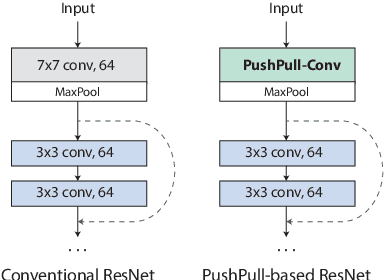
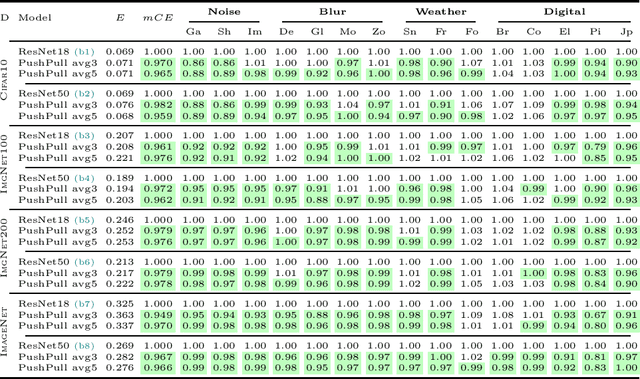

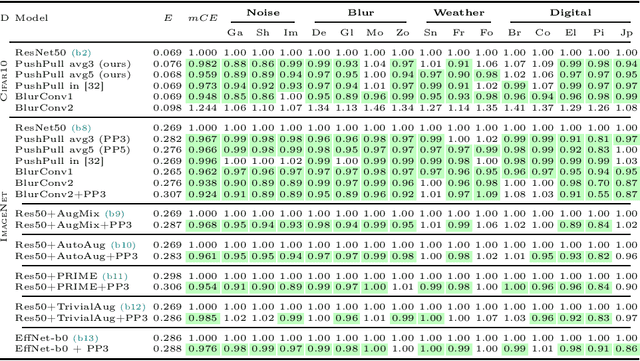
Abstract:We introduce a novel computational unit, termed PushPull-Conv, in the first layer of a ResNet architecture, inspired by the anti-phase inhibition phenomenon observed in the primary visual cortex. This unit redefines the traditional convolutional layer by implementing a pair of complementary filters: a trainable push kernel and its counterpart, the pull kernel. The push kernel (analogous to traditional convolution) learns to respond to specific stimuli, while the pull kernel reacts to the same stimuli but of opposite contrast. This configuration enhances stimulus selectivity and effectively inhibits response in regions lacking preferred stimuli. This effect is attributed to the push and pull kernels, which produce responses of comparable magnitude in such regions, thereby neutralizing each other. The incorporation of the PushPull-Conv into ResNets significantly increases their robustness to image corruption. Our experiments with benchmark corruption datasets show that the PushPull-Conv can be combined with other data augmentation techniques to further improve model robustness. We set a new robustness benchmark on ResNet50 achieving an $mCE$ of 49.95$\%$ on ImageNet-C when combining PRIME augmentation with PushPull inhibition.
Classification of Radio Galaxies with trainable COSFIRE filters
Nov 19, 2023



Abstract:Radio galaxies exhibit a rich diversity of characteristics and emit radio emissions through a variety of radiation mechanisms, making their classification into distinct types based on morphology a complex challenge. To address this challenge effectively, we introduce an innovative approach for radio galaxy classification using COSFIRE filters. These filters possess the ability to adapt to both the shape and orientation of prototype patterns within images. The COSFIRE approach is explainable, learning-free, rotation-tolerant, efficient, and does not require a huge training set. To assess the efficacy of our method, we conducted experiments on a benchmark radio galaxy data set comprising of 1180 training samples and 404 test samples. Notably, our approach achieved an average accuracy rate of 93.36\%. This achievement outperforms contemporary deep learning models, and it is the best result ever achieved on this data set. Additionally, COSFIRE filters offer better computational performance, $\sim$20$\times$ fewer operations than the DenseNet-based competing method (when comparing at the same accuracy). Our findings underscore the effectiveness of the COSFIRE filter-based approach in addressing the complexities associated with radio galaxy classification. This research contributes to advancing the field by offering a robust solution that transcends the orientation challenges intrinsic to radio galaxy observations. Our method is versatile in that it is applicable to various image classification approaches.
Deep supervised hashing for fast retrieval of radio image cubes
Sep 02, 2023Abstract:The shear number of sources that will be detected by next-generation radio surveys will be astronomical, which will result in serendipitous discoveries. Data-dependent deep hashing algorithms have been shown to be efficient at image retrieval tasks in the fields of computer vision and multimedia. However, there are limited applications of these methodologies in the field of astronomy. In this work, we utilize deep hashing to rapidly search for similar images in a large database. The experiment uses a balanced dataset of 2708 samples consisting of four classes: Compact, FRI, FRII, and Bent. The performance of the method was evaluated using the mean average precision (mAP) metric where a precision of 88.5\% was achieved. The experimental results demonstrate the capability to search and retrieve similar radio images efficiently and at scale. The retrieval is based on the Hamming distance between the binary hash of the query image and those of the reference images in the database.
Advances on the classification of radio image cubes
May 05, 2023

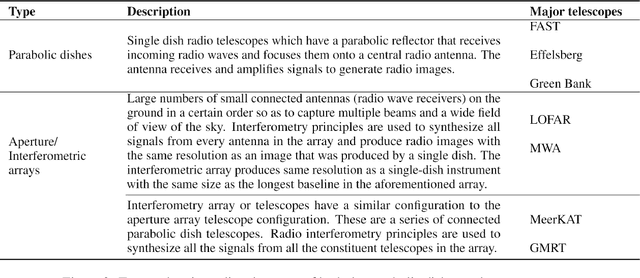
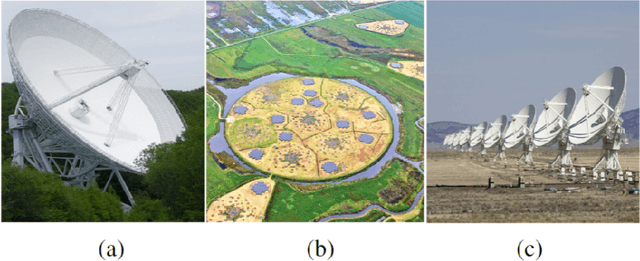
Abstract:Modern radio telescopes will daily generate data sets on the scale of exabytes for systems like the Square Kilometre Array (SKA). Massive data sets are a source of unknown and rare astrophysical phenomena that lead to discoveries. Nonetheless, this is only plausible with the exploitation of intensive machine intelligence to complement human-aided and traditional statistical techniques. Recently, there has been a surge in scientific publications focusing on the use of artificial intelligence in radio astronomy, addressing challenges such as source extraction, morphological classification, and anomaly detection. This study presents a succinct, but comprehensive review of the application of machine intelligence techniques on radio images with emphasis on the morphological classification of radio galaxies. It aims to present a detailed synthesis of the relevant papers summarizing the literature based on data complexity, data pre-processing, and methodological novelty in radio astronomy. The rapid advancement and application of computer intelligence in radio astronomy has resulted in a revolution and a new paradigm shift in the automation of daunting data processes. However, the optimal exploitation of artificial intelligence in radio astronomy, calls for continued collaborative efforts in the creation of annotated data sets. Additionally, in order to quickly locate radio galaxies with similar or dissimilar physical characteristics, it is necessary to index the identified radio sources. Nonetheless, this issue has not been adequately addressed in the literature, making it an open area for further study.
Automated image analysis in large-scale cellular electron microscopy: A literature survey
Jun 14, 2022



Abstract:Large-scale electron microscopy (EM) datasets generated using (semi-) automated microscopes are becoming the standard in EM. Given the vast amounts of data, manual analysis of all data is not feasible, thus automated analysis is crucial. The main challenges in automated analysis include the annotation that is needed to analyse and interpret biomedical images, coupled with achieving high-throughput. Here, we review the current state-of-the-art of automated computer techniques and major challenges for the analysis of structures in cellular EM. The advanced computer vision, deep learning and software tools that have been developed in the last five years for automatic biomedical image analysis are discussed with respect to annotation, segmentation and scalability for EM data. Integration of automatic image acquisition and analysis will allow for high-throughput analysis of millimeter-range datasets with nanometer resolution.
To remove or not remove Mobile Apps? A data-driven predictive model approach
Jun 08, 2022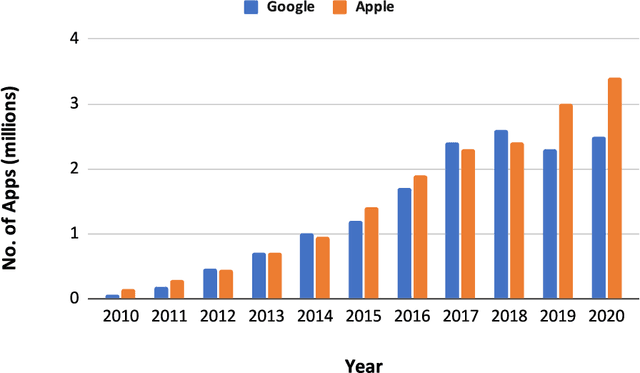
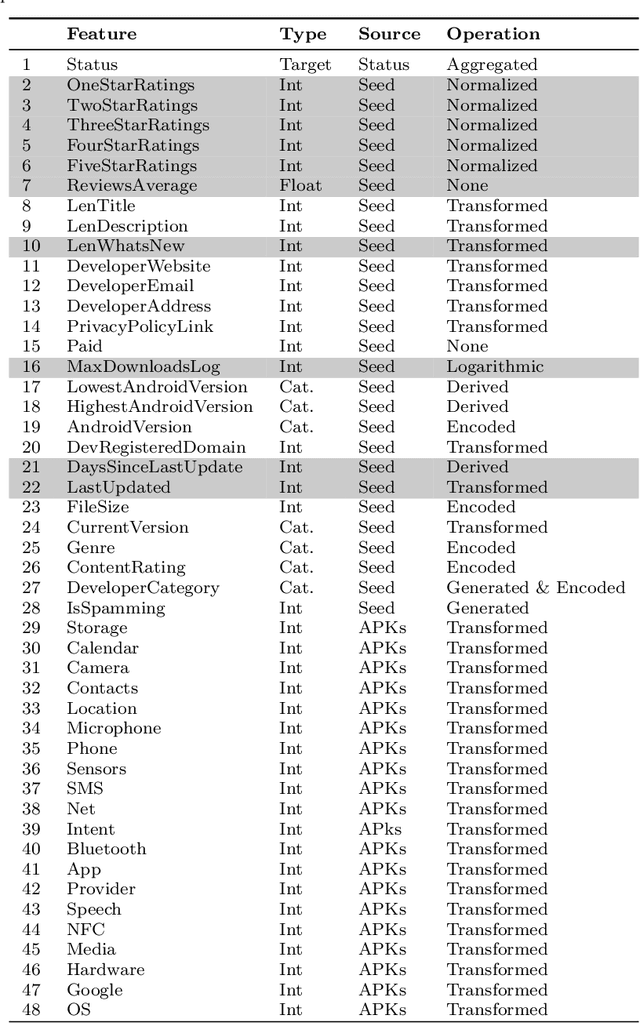

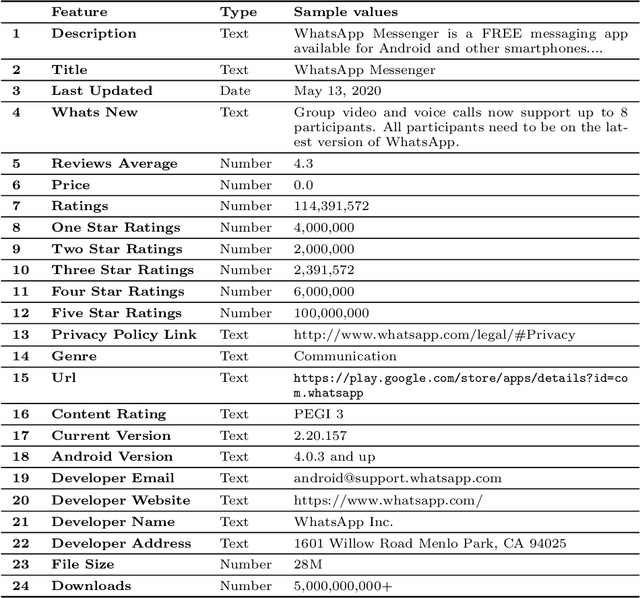
Abstract:Mobile app stores are the key distributors of mobile applications. They regularly apply vetting processes to the deployed apps. Yet, some of these vetting processes might be inadequate or applied late. The late removal of applications might have unpleasant consequences for developers and users alike. Thus, in this work we propose a data-driven predictive approach that determines whether the respective app will be removed or accepted. It also indicates the features' relevance that help the stakeholders in the interpretation. In turn, our approach can support developers in improving their apps and users in downloading the ones that are less likely to be removed. We focus on the Google App store and we compile a new data set of 870,515 applications, 56% of which have actually been removed from the market. Our proposed approach is a bootstrap aggregating of multiple XGBoost machine learning classifiers. We propose two models: user-centered using 47 features, and developer-centered using 37 features, the ones only available before deployment. We achieve the following Areas Under the ROC Curves (AUCs) on the test set: user-centered = 0.792, developer-centered = 0.762.
Video Camera Identification from Sensor Pattern Noise with a Constrained ConvNet
Dec 11, 2020



Abstract:The identification of source cameras from videos, though it is a highly relevant forensic analysis topic, has been studied much less than its counterpart that uses images. In this work we propose a method to identify the source camera of a video based on camera specific noise patterns that we extract from video frames. For the extraction of noise pattern features, we propose an extended version of a constrained convolutional layer capable of processing color inputs. Our system is designed to classify individual video frames which are in turn combined by a majority vote to identify the source camera. We evaluated this approach on the benchmark VISION data set consisting of 1539 videos from 28 different cameras. To the best of our knowledge, this is the first work that addresses the challenge of video camera identification on a device level. The experiments show that our approach is very promising, achieving up to 93.1% accuracy while being robust to the WhatsApp and YouTube compression techniques. This work is part of the EU-funded project 4NSEEK focused on forensics against child sexual abuse.
Device-based Image Matching with Similarity Learning by Convolutional Neural Networks that Exploit the Underlying Camera Sensor Pattern Noise
Apr 23, 2020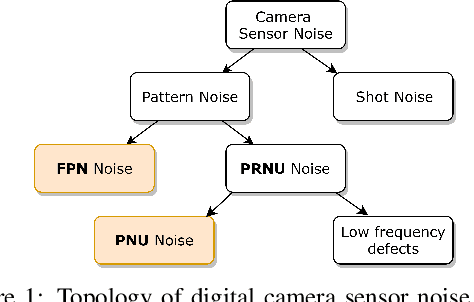
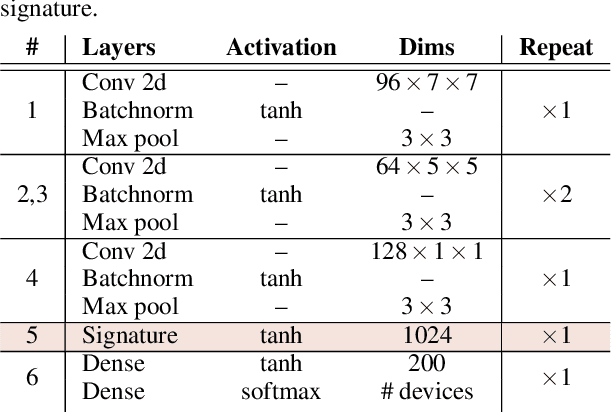
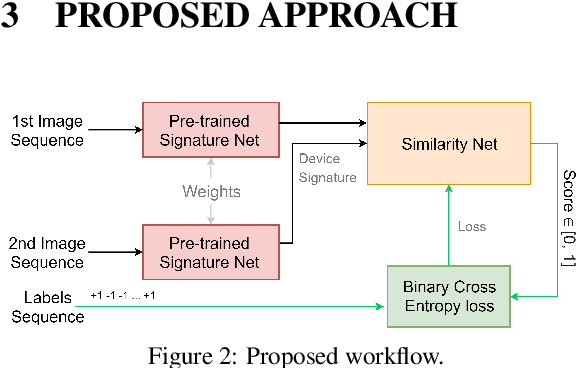
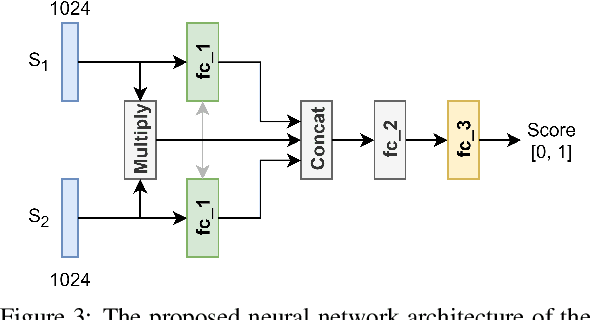
Abstract:One of the challenging problems in digital image forensics is the capability to identify images that are captured by the same camera device. This knowledge can help forensic experts in gathering intelligence about suspects by analyzing digital images. In this paper, we propose a two-part network to quantify the likelihood that a given pair of images have the same source camera, and we evaluated it on the benchmark Dresden data set containing 1851 images from 31 different cameras. To the best of our knowledge, we are the first ones addressing the challenge of device-based image matching. Though the proposed approach is not yet forensics ready, our experiments show that this direction is worth pursuing, achieving at this moment 85 percent accuracy. This ongoing work is part of the EU-funded project 4NSEEK concerned with forensics against child sexual abuse.
* 7 pages, 4 figures, conference paper
Brain-inspired robust delineation operator
Nov 26, 2018



Abstract:In this paper we present a novel filter, based on the existing COSFIRE filter, for the delineation of patterns of interest. It includes a mechanism of push-pull inhibition that improves robustness to noise in terms of spurious texture. Push-pull inhibition is a phenomenon that is observed in neurons in area V1 of the visual cortex, which suppresses the response of certain simple cells for stimuli of preferred orientation but of non-preferred contrast. This type of inhibition allows for sharper detection of the patterns of interest and improves the quality of delineation especially in images with spurious texture. We performed experiments on images from different applications, namely the detection of rose stems for automatic gardening, the delineation of cracks in pavements and road surfaces, and the segmentation of blood vessels in retinal images. Push-pull inhibition helped to improve results considerably in all applications.
 Add to Chrome
Add to Chrome Add to Firefox
Add to Firefox Add to Edge
Add to Edge